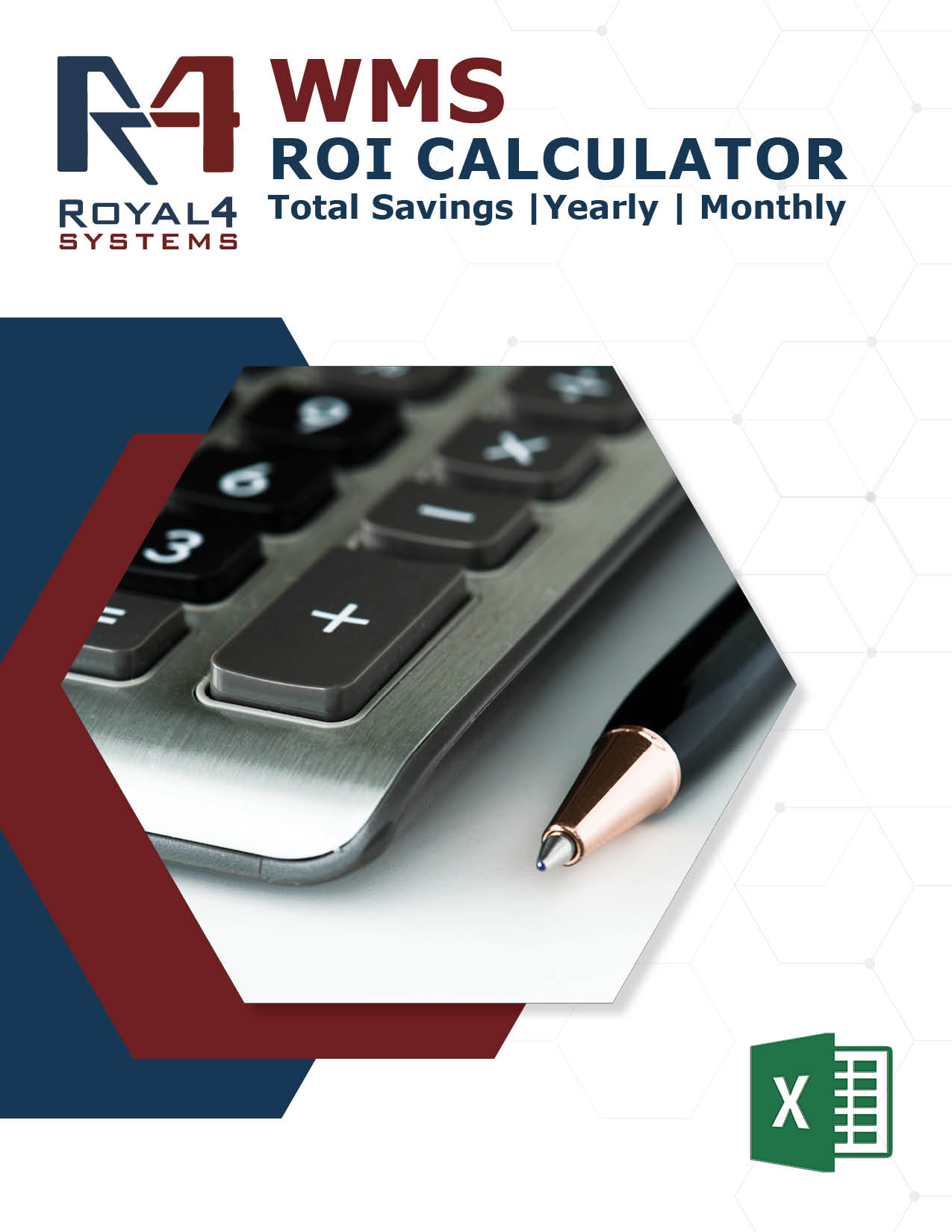
What is a WMS?
A warehouse management system (WMS) is a software system that delivers visibility into a company’s full inventory and oversees supply chain fulfillment activities from the warehouse to the retail shelf. By coordinating and optimizing resource consumption and material movements, WMS solutions also assist businesses in maximizing labor and space efficiency, as well as equipment expenditures. WMS systems, in particular, are intended to meet the demands of a worldwide supply chain, encompassing distribution, manufacturing, asset-intensive, and service organizations.
This is accomplished through monitoring warehouse design, inventory tracking, selecting and packaging items, processing, put-away, shipping, employee management, yard and dock management, and monitoring.
Warehouse management system software provides transparency by offering a real-time view of the company’s inventory, whether in a facility or in transit. A good WMS, on the other hand, does more than just keep track of inventory from the time it enters a warehouse to the time it departs; it also aids with returns management (and avoids the need for customers to return products in the first place).
The major warehouse processes
Let’s take a quick look at the major procedures of warehouse management to gain a better understanding of the operations.
1. Receiving
This entails having control over the delivery of the proper quantity of the requested goods—of the appropriate quality—at the right time to your warehouse. This process can be further subdivided into smaller steps such as placing a purchase order, arranging warehouse space, unloading (human or automated), verification, database entry, and so on. Automated dimensioners that gather cargo measurements, as well as dock schedulers, might be used at this step to guarantee that the correct number of personnel is on hand.
2. Putaway
The process of sending products to the best location in the warehouse. It is critical in this case to correctly identify each SKU (stock keeping unit) and get it to the appropriate location. The goal of improving this process is to transport commodities for storage to the best possible place as quickly, efficiently, and effectively as possible. Slotting and space management systems, for example, automatically allocate ideal places for each cargo, allowing for a simplified putaway procedure and maximum space usage. Storage conditions are also important for ensuring the safety of both items and staff.
3. Storage
The warehousing process involves placing things in the most appropriate storage area. When done correctly, the storage procedure completely leverages available warehouse space and boosts worker efficiency. Improving your storage process is only achievable if the appropriate KPIs are tracked. Having software that automatically estimates warehouse storage usage and records the appropriate storage KPIs allows you to assess how efficient each component of your storage operation is.
4. Picking
The warehousing process involves gathering items in a warehouse to meet client orders. Because it is the most expensive activity in the warehouse, accounting for up to 55% of overall operating expenses, improving it will allow you to considerably decrease costs while increasing warehouse efficiency. Streamlining this procedure should also prioritize accuracy, as mistakes can have a direct influence on client satisfaction.
5. Packing
The process of assembling the requested materials, inspecting their quality, and preparing the product for distribution. At this stage, it’s critical to have all of the order’s relevant data as well as the type or amount of packaging required for every order. Automatic wrappers can also help you save time and money by reducing the amount of packing material you utilize.
6. Shipping
Often known as dispatching, shipping is the process of transferring items to customers and ensuring that they arrive safely and on schedule. Having a shipping mobile app and smartphone on hand allows you to have the necessary information at your fingertips and in real-time to monitor shipments on the run. Loading systems can also provide you with guidelines that teach you how to load freight securely and effectively.

Key features to include in a WMS
1. Simple and Understandable Interface
Some warehouse management features are disproportionately and unnecessarily complicated. Even if you have a rich set of features, its interface should be simple to comprehend and utilize. Nonetheless, the interface is frequently one of the elements that many businesses overlook before making a purchase. Examine the UI and how the various tools are displayed. You must find a system that is simple to use for both you and your staff.
2. Easy Integration with Enterprise Resource Planning (ERP) Platforms
When information in a WMS is connected with the ERP, it speeds up the process and allows for more accurate, real-time data monitoring across the business. It guarantees that all information is saved on a unified platform and that it is adequately coordinated with the other entities. For example, if the sales team is unfamiliar with a warehouse management system, they will be unable to inform their clients about the status of their order in a timely manner. A WMS should be connected with an ERP platform to ensure that team members and other units are not left in the dark or have an inaccurate view of the supply chain.
3. Inventory Management
A WMS platform will track inventory data using barcode scanners and radio frequency identification (RFID) tags, continuously keeping tabs on the software’s dashboard to guarantee that only the most up-to-date information is available to everyone with rights. It also helps to ensure that things can be easily located whenever they have to be moved. WMS manages inventory-related procedures such as kitting and cycle counting, as well as cross-docking and other inventory-related duties. A good WMS makes cycle counting easier by proposing goods to count, where they should be counted, and updating the ERP system as needed.
4. Order Management
Certain WMSs provide integration with carrier networks that can greatly improve shipping operations. Furthermore, as automated integration becomes more common, warehouse managers will be able to eliminate time-consuming human data-entry tasks. The use of robots, artificial intelligence, and machine learning to automate warehouse management systems may dramatically increase efficiency and speed. Picking robots can identify and distribute items without requiring employees to run back and forth from goods and shipping facilities. Conveyor systems may also move items around the warehouse and directly to shipment without the need for human interaction.
5. Labor Management
Another WMS purpose is labor management tools. Proper labor management may assist in keeping employees on track and identifying procedures that are wasting valuable resources unnecessarily. Employees may clock in and out by scanning QR codes or inserting pins that monitor their arrival and departure from the office. These features allow employees to keep a record of their hours, paid time off, and overtime.
6. Financial Management
Monitoring business performance and sales trends throughout sites, consumers, and commodities is crucial for making educated, data-driven decisions regarding future actions and improvements. WMS has a number of capabilities for gathering and monitoring all elements of your operation. Configurable metrics allow you to evaluate all the data and discover, among other things, your most profitable client, best-selling goods, best-performing sales channel, most productive staff, and peak sales season.
7. Risk Management
An effective business development strategy must include risk analysis and comprehensive planning. Modern WMS allows for the study of operational information and the generation of predictions while taking prospective dangers or present interruptions into consideration. WMS’s demand planning function reduces overstocking, product waste, and stockouts. Products that are in great demand or are seasonal can be monitored and prioritized.
8. Adoption of Mobile Applications
Mobile deployment is yet another modern warehouse management feature. Manually writing and inspecting stock or shipping details is a thing of the past. Instead, a variety of mobile devices and barcode scanners that may be used to identify objects when picking or completing inventory can be employed. There are also mobile printers that help to speed up numerous procedures in the warehouse. Consider the sorts of mobile alternatives available and the equipment required to use them when looking at warehouse management features. Even if there is an extra expense, it is worthwhile.
9. Paperless Procedures
The objective nowadays is to go paperless, including using as little paper as possible in the warehouse management process. Going digital reduces the risk of losing information since there is no chance of losing physical paper. The days of employing outdated warehouse management procedures and ledgers are over. The world moves much too fast, and the needs of today are far too great to rely on old methods of managing and documenting orders, inventories, and other data.
Request a Consultation
Need more information?
Solutions






![image001[25]](https://www.royal4.com/wp-content/uploads/2023/11/image00125.png)